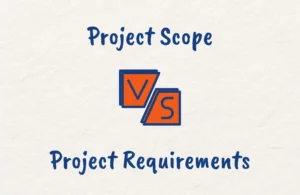While every project is inherently unique, this does not necessarily mean that as a project manager, you have to reinvent the wheel for every project you initiate.
There are lots of strategic resources that you can utilize for efficient project execution and governance and some of the most vital of these resources are Organizational Process Assets (OPAs).
Having a solid grasp of OPAs and how to leverage them allows you to optimize workflows, enable knowledge management, and boost team productivity as a project manager.
In this article, we will take a good look at OPAs, their categories and examples, as well as their importance in project management. We’ll also compare and contrast them with Enterprise Environmental Factors to understand the differences.
If you’re preparing for the PMP exam, OPAs are inputs to most of the project management processes so you can expect questions that require you to have a good knowledge of the topic. This article provides tips on answering the questions.
What are Organizational Process Assets (OPAs)?
Organizational process assets (OPAs) are the collection of guidelines, templates, documents, information, and knowledge bases specific to an organization.
As defined by the Project Management Body of Knowledge (PMBOK) Guide, OPAs are the “plans, processes, policies, procedures, and knowledge bases specific to and used by the performing organization.”
They encompass the historical information and knowledge repositories utilized in an organization’s projects and operations.
They influence and enhance how project work is conducted, are unique to different organizations, and evolve as assets are updated and lessons are learned from projects.

Categories of Organizational Process Assets
Organizational process assets can be grouped into two main categories:
1. Processes and Procedures
This category encompasses the documented processes, procedures, and standards used in an organization.
They enable consistency, efficiency, and structured governance in projects.
- Processes: These provide high-level overviews of workflows and activities required to complete tasks. They outline the steps to achieve goals without getting into specifics.
- Procedures: Procedures are more detailed work instructions that specify how processes should be executed. They outline the requirements and actions for performing tasks.
- Policies: Policies are guidelines that direct decision-making in support of organizational objectives. Policies influence how management and employees approach their work.
2. Organizational Knowledge Base
This encompasses the historical records, documents, databases, and repositories unique to an organization.
The organizational knowledge base preserves institutional knowledge and provides reference materials to enable process improvements over time.

Importance of Organizational Process Assets in Project Management
As a project manager, Organizational Process Assets are one of your best friends. They provide invaluable benefits for managing projects efficiently.
Here are some reasons why OPAs are so important:
1. Promote Consistency
OPAs like processes, procedures, and policies enable consistency in how work is performed across different projects in an organization.
With documented procedures in place, project teams are aligned on ways of working and outputs have fewer variances.
2. Enable Knowledge Transfer
OPAs allow knowledge gained over the years through experience to be passed on.
Lessons learned repositories and project historical records preserve institutional knowledge that can be applied to future initiatives.
3. Accelerate Onboarding
Documented OPAs speed up the process of onboarding new team members.
Instead of reinventing the wheel, new hires can leverage process guides and knowledge bases to come up productive more quickly.
4. Improve Project Governance
Processes, policies, and templates embedded in OPAs provide a structured framework for managing projects consistently and strengthen the organization’s project management governance model.
5. Enable Benchmarking
Historical project documents and performance data enable benchmarking for future projects.
Past schedules, budgets, risk plans, and quality results provide baseline standards to compare against.
6. Facilitate Continuous Improvement
By referencing lessons learned, process owners can continuously fine-tune and optimize workflows over time.
Performance data also provides objective inputs for improving processes.
7. Reduce Project Risk
OPAs help mitigate project risks in several ways. Risk registers provide insights into past risks and responses, standardized processes minimize the risk of errors, and policies guide teams to make decisions that align with organizational risk appetite.
8. Save Time and Cost
By avoiding the reinvention of the wheels for every new project with OPAs in place, project teams save effort, time, and cost.

Organizational Process Assets Examples
To understand OPAs better, let’s look at some examples across the different categories:
Processes and Procedures
1. Standards and Guidelines
- ISO 9001 Quality Management System (QMS) standards
- PMBOK (Project Management Body of Knowledge) guidelines
- IEEE (Institute of Electrical and Electronics Engineers) software development standards
- OSHA (Occupational Safety and Health Administration) safety standards
2. Templates
- Project charter template used for initiating projects
- Weekly status report template used for project updates
- Risk register template used for identifying and tracking risks
- Change request form used for documenting and managing change requests
- Business case template used for justifying the initiation of a project
3. Policies and Procedures
- A company’s change control procedure that outlines the steps to handle changes in the project
- A company’s risk management policy that defines how risks should be identified, assessed, and mitigated
- Procurement procedures detailing how to select and manage vendors
- Communication policies describing how and when project stakeholders should be informed
- HR policies such as recruitment, onboarding, performance evaluation, and termination
4. Plans
- A project management plan from a previous successful project
- A quality management plan defining quality requirements and how to achieve them
- A risk management plan outlining how risks will be managed and controlled
- A process improvement plan that outlines the approach for enhancing the project’s processes
Organizational Knowledge Base
1. Historical Information and Lessons Learned:
- Project files from a completed software development project
- A database of past project performance data
- Lessons learned from a previous project about what worked well and what didn’t
2. Project Records
- A project schedule from a similar past project
- A risk register from a previous project
- A stakeholder register outlining all stakeholders, their influence, and interest in a past project
3. Organizational Structure Information
- An organizational chart showing the hierarchy of the company
- A RACI (Responsible, Accountable, Consulted, Informed) chart from a past project
4. Employee Information
- A database of staff skills and competencies
- Performance reviews of team members from a previous project
5. Marketplace Conditions
- A competitive analysis report of the software development industry
- A market study about customer preferences for software products
6. Stakeholder Information
- A stakeholder register from a past project
- Records of stakeholder communication from a previous project

Organizational Process Assets (OPAs) vs Enterprise Environmental Factors (EEFs)
Organizational Process Assets (OPAs) and Enterprise Environmental Factors (EEFs) are both influential factors in project management, but happen to be quite different.
OPAs are internally driven assets that enable structured execution, while EEFs are fixed external factors that shape the boundaries within which work can be done.
Some of the key differences between OPAs and EEFs include:
1. Definition
OPAs are internal to the organization and under its control, such as processes, procedures, plans, policies, and knowledge bases.
In contrast, EEFs are external factors that the organization has little or no control over, such as industry regulations, political climate, technology trends, competition, and market conditions.
2. Scope
OPAs are focused on and unique to a particular organization. EEFs on the other hand apply to the overall enterprise ecosystem and industry environment.
3. Usage
OPAs are discretionary and provide reference information to guide project teams. Teams can choose to utilize relevant OPAs as needed.
EEFs set boundaries and constraints that the organization must abide by such that project teams have no choice but to operate within EEFs.
4. Influence
OPAs positively influence project execution by presenting options, best practices, and lessons learned to inform decisions. OPAs positively influence project execution.
EEFs can negatively impact projects if not addressed properly as they impose limitations that may introduce risk.
5. Flexibility
OPAs are living assets, meant to be updated and improved continuously based on experience and learning.
On the other hand, EEFs are largely fixed constraints that the organization must work within, despite the limited ability to change them.
6. Management
OPAs are developed and maintained internally by the organization and the knowledge base grows over time.
EEFs originate externally and must simply be tracked and monitored by the organization.

Organizational Process Assets PMP Exam Tips
Organizational Process Assets (OPAs) play a critical role in project management and are an important focus area for the PMP exam.
Understanding the concept of OPAs and knowing how they are created and utilized within various PMBOK processes will greatly enhance your chances of passing the PMP exam.
Processes where OPAs are Created
OPAs are typically created during the following PMBOK processes:
- Project Closure Phase: The project closure phase is an essential process in which OPAs such as project documents, lessons learned, and historical information are updated. These assets are then stored in the organization’s knowledge base for future reference.
- Monitoring and Controlling Process Group: This involves keeping track of project activities to identify potential problems promptly. The lessons learned from these activities form part of the OPAs.
Processes where OPAs are Inputs
OPAs are inputs to numerous PMBOK processes, as they provide valuable context and guidelines for managing projects. Some examples are:
- Project Integration Management: The development of the project charter and project management plan uses OPAs as inputs.
- Project Scope Management: OPAs are used as inputs in the planning process to define and manage the project scope.
- Project Schedule Management: OPAs serve as inputs in the Sequence Activities, Estimate Activity Durations, and Develop Schedule processes.
- Project Cost Management: OPAs are utilized for estimating costs and determining budgets.
- Project Quality Management: OPAs are inputs to Plan Quality Management, Manage Quality, and Control Quality processes.
Tips for PMP Exam
- Understand OPAs: Familiarize yourself with the concept of OPAs and their categories. Understand how they are created and how they influence project management processes.
- OPAs and PMBOK Processes: Review the PMBOK processes where OPAs are inputs or outputs and understand their role in each of these processes.
- OPAs and Lessons Learned: Recognize the role of OPAs in capturing and utilizing lessons learned from past projects.
- Practice Questions: Answer practice questions related to OPAs. This will not only help you understand the concept better but also prepare you for the exam format.
Conclusion
Organizational Process Assets enable structured project execution for an organization.
A robust repository of processes, procedures, and knowledge bases allows organizations to capitalize on lessons learned, promote consistency, accelerate onboarding, and facilitate continuous improvement.
Understanding OPAs and judiciously applying them provides immense leverage for project managers seeking to optimize project performance.
Invest time in developing OPAs, and reap the benefits of enhanced productivity, reduced risk, and effective governance over the long term.





